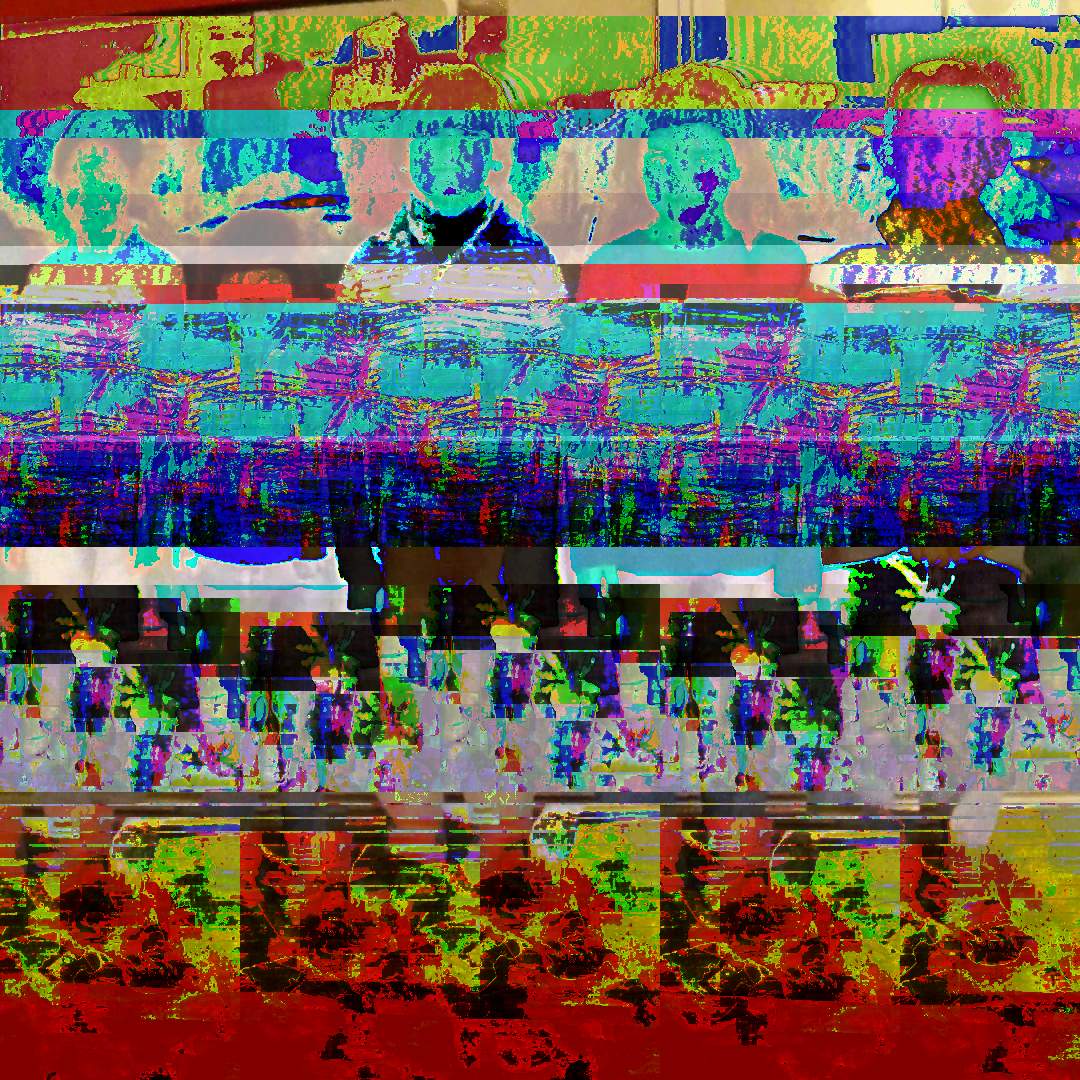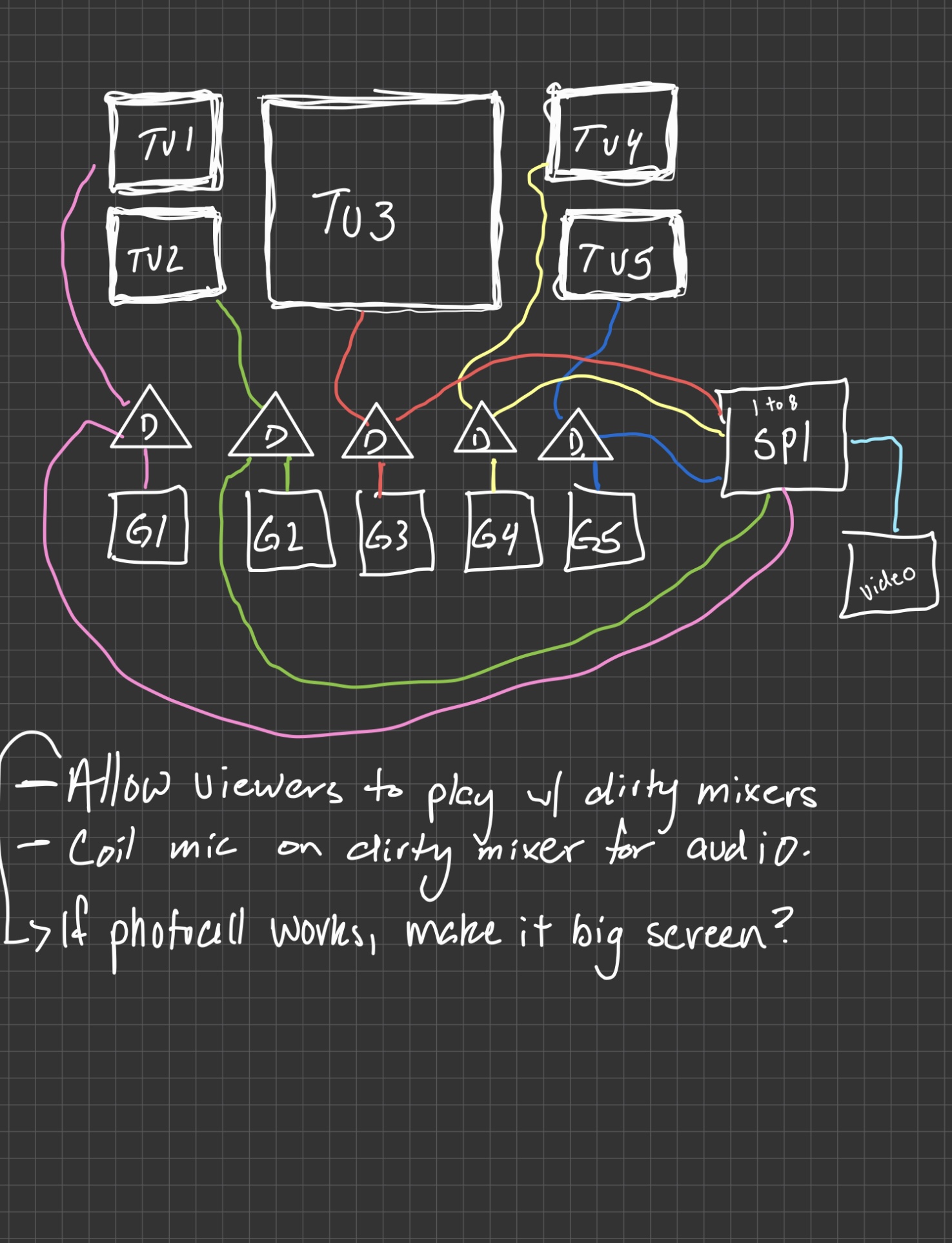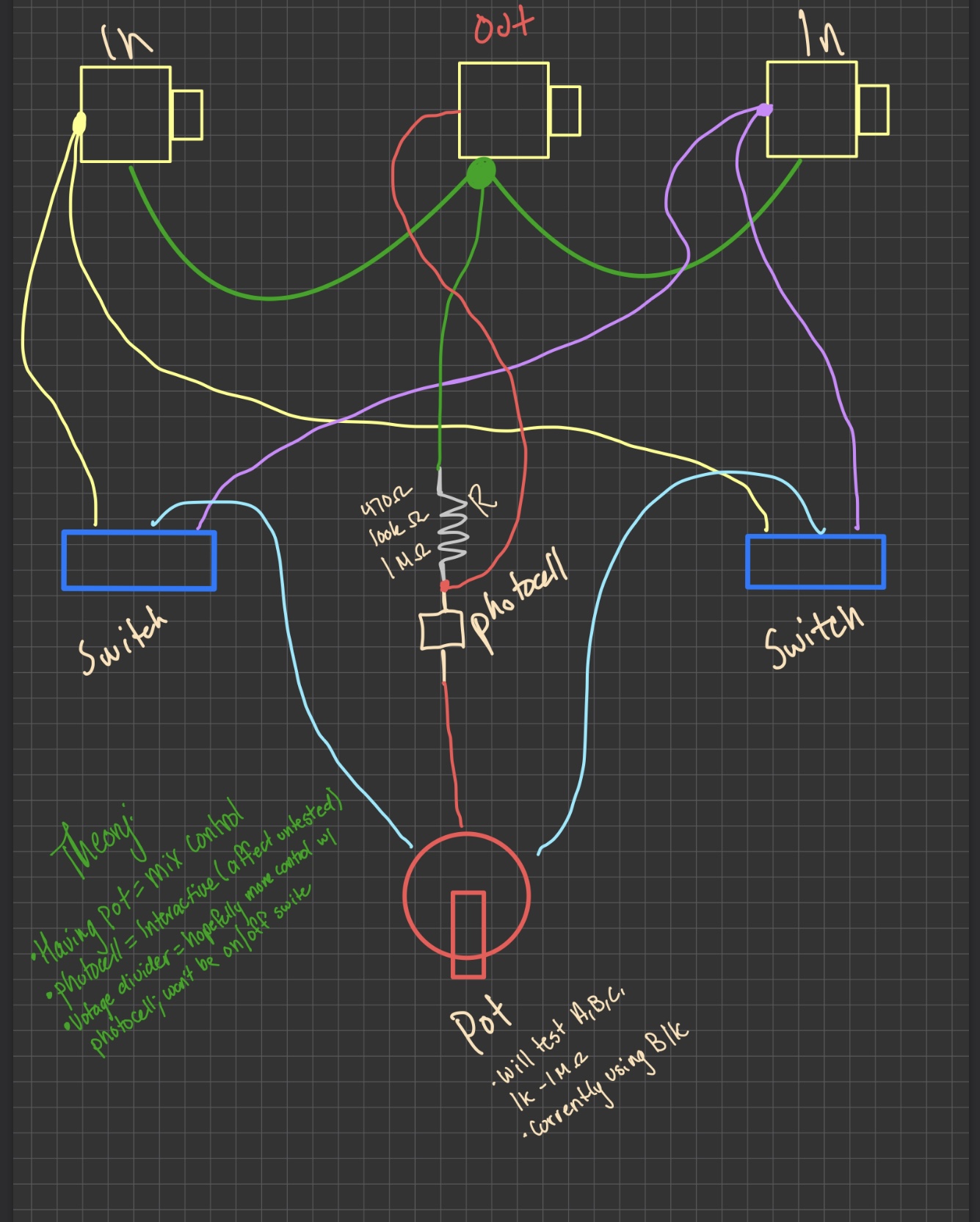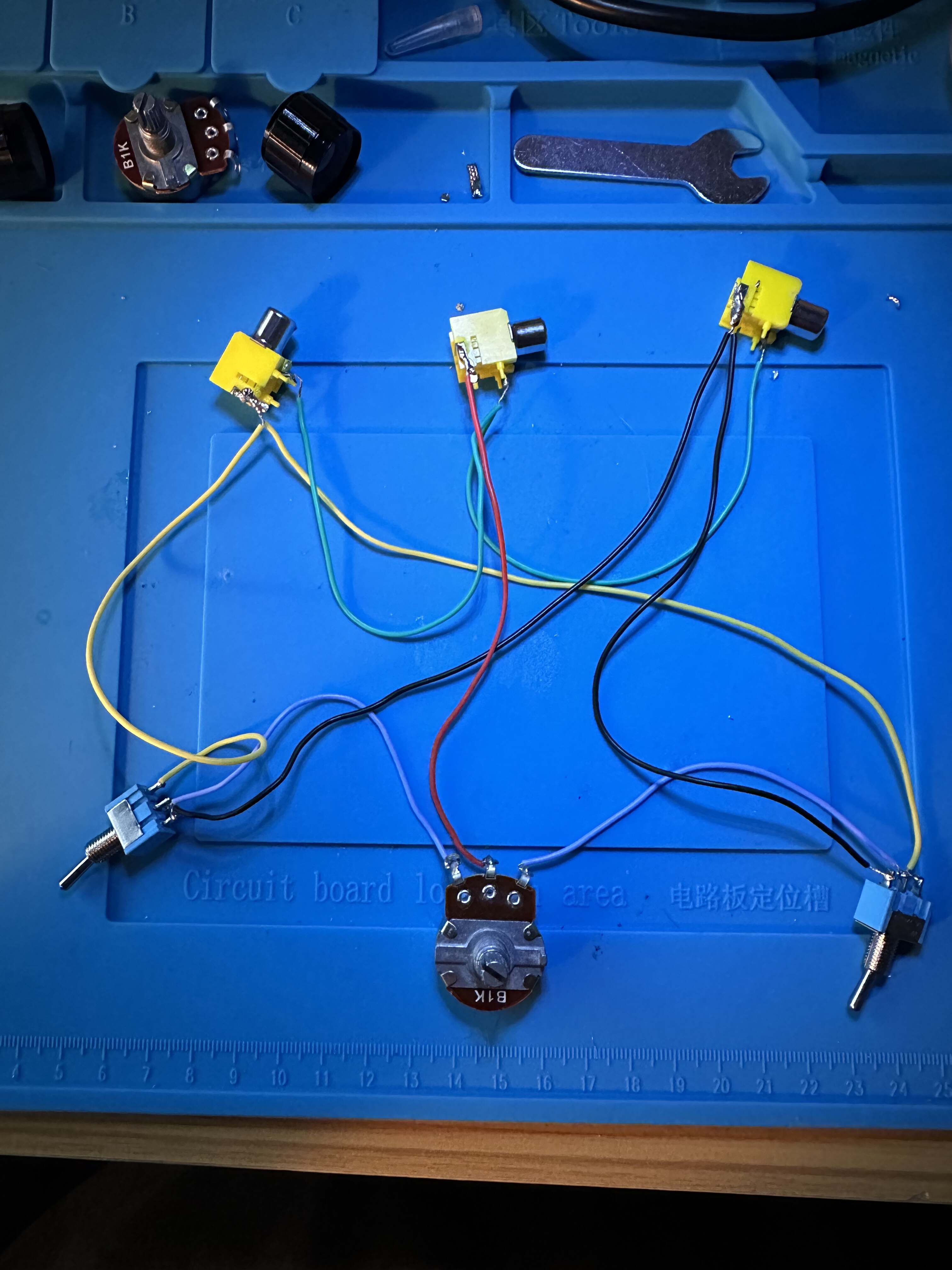




Lost Frequencies March 2023
Artist's Statement: At its core, this project is about exploring the nature of loss—both personal experiences and those common to many of us, such as the fading of childhood innocence as we grow, our separation from friends and family over time, and the shared grief brought on by Covid-19. It began with the technique of data bending and corrupting personal photo and video files, a method that aptly represents the theme of loss through the degradation and distortion of data. However, I felt that simply relying on techniques I was already proficient in was not enough for the scope of this project. I was driven to extend my skills beyond what I knew, aiming to explore new audio/visual mediums. This aspiration led me to the intricate process of constructing hardware designed specifically to manipulate the analogue flow of video signals. Through this hands-on approach, I was able to physically interact with the signal path, introducing intentional aberrations and distortions that metaphorically echo the concept of loss and transformation. This project, thus, evolved into an exploratory journey, inspired by the realization that in the silence left by absent voices, there are novel harmonies to be discovered, silently awaiting their moment to resonate.
Documentation:
Glitched Images Process
I found the image I wanted to revolve my project around and threw them into Audacity (free DAW program) as .tiff or .bmp files in order to manipulate the photo data using built-in effects. I made a few different variations that I really liked, and then threw them into photoshop and further edited them (mostly just cut/pasted/interchange segments of the photo). Once I had 24 images (24 frames in 1 second), I threw them into a gif maker I found online (ezgif.com) and created 5-second gifs for each that I intended on looping on the analog TVs.
Datamoshed video
I had never datamoshed a video before, but I knew I wanted to experiment with it so this project seemed like the perfect opportunity. I read online that people often use Avidemux (open-source video editing/transcoding software) to remove the I-frames in the video and produce the desired effect; however, I had no luck with this method and had to find an alternative. I found a python program on github called Datamosher-Pro (big shoutout Akascape) that made it easy to datamosh some videos. After moshing each video I had individually, I combined them all together to create a 14 minute video that I used as the 2nd video feed to mix my gifs with.
Dirty Mixers
I had no intention of including a dirty mixer at the start of my project, because I had no idea what it even was until a professor urged me to look into them since they believed it would fit my project well, and they were right. This was the part of my project that took the most research and work. I had no previous experience with electronics/soldering, but I was able to find some great resources online (I modeled my dirty mixers after youtuber Ava Landry's, they're a super great artist and an awesome resource for getting started with your own mixer) and began having fun with it. Over the course of the project, I had to create over 10 different mixers, testing different potentiometers and resistors (such as a photocell resistor to incorporate the use of light into my project). Finally, after getting the mixers down, I had to create the box to house the wires. Luckily, the media arts department had a laser cutter open for student use, where I then taught myself how to laser cut the wooden box that houses the mixers, ensuring the box has airflow since it also houses the dedicated media players that contain the video files.
Challenges
There were several challenges I faced while working on this project, mostly being lack of time and access to resources. Because this project was so experimental, it required a lot of trial and error with wiring new mixers/resistors, which was not just time consuming to solder, but because I didn’t have my own TV at home to use, I was limited to how often I could use the resources on campus. I was working on this capstone project while also being enrolled in 4 other classes full time, so I was stretched thinner on time than I would have liked to have been and less time for prototyping overall. Since I had also never worked with electronics before, I had to source all the materials for the project myself, which was a bit costly and meant I had to wait for my material to arrive in the mail if I wanted to try any new pieces out in the mixer. That being said, I do see this project continuing to evolve as time goes on and as I gain new circuit bending experience. Given what I had, I am overwhelmingly proud of how it turned out, and will use this project as a jump pad for many other projects to come.